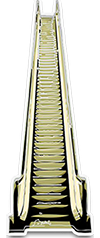
AIRPORT HOTEL CASE STUDY: Step 5, FRONT DESK TEAM TRAINING
After sending in an array of Mystery Guests in previous weeks, we arrive at “Front Desk Team Training” the fifth step in our six part case study with Hong Kong’s busiest Airport hotel, determining the correlation between increased employee engagement and positive guest experience.
In our initial team training session, we discovered the regular hotel guest was after “the simple things” such as – to be acknowledged, spoken to politely and greeted with a smile and eye contact.
We found throughout the mystery visits these key factors were adequately fulfilled and noted within the reports. It appears that putting the front desk staff in the guest’s shoes in our last workshop, was a great indicator that they had absorbed the valuable information that was found.
After collecting data and drawing parallels found in the mystery guest reports, we established the gaps in service were the main focus of this front desk team training session.
The four main factors were:
1. To remain efficient throughout the check in process.
There are many steps in a regular check-in process and whilst you can become familiar with each action, step by step, to be truly productive you must multitask the technical skills whilst also keeping up the conversation with the guest.
2. To show signs of empathy.
An airport hotel is a little different from a standard hotel as they regularly encounter guests that have come off long flights or are checking in due to cancelled flights. The mood of some guests can be a little negative before they’ve even reach the check in counter. By acknowledging their plight and showing concern and understanding, it can warm up the experience for both the guest and the front desk associate.
To see how good the team was at reading expressions we carried out a quick and fun empathy eye test and discussed the importance of reading facial expressions and body language and the cues it gives to anticipate guests needs.
3. Generating rapport.
Many studies have shown that by creating a connection with a guest throughout the service interaction will increase the positivity within the guest’s experience. By creating genuine and valid chit chat, empathising and actively listening to the guest and will make the guest feel comfortable and will create a relationship. The guest should then feel like they can talk to the associate of anything was to happen during their stay.
4. Putting a personal touch into the service sequence
Going through the motions of checking a guest and not adding in touches of personality makes the process seem robotic.
The guest should have a memorable experience. They should be made to feel comfortable and what better way to do it than including the touchpoints from above and presented in your own personal style. Guests are less likely to complain if they have a great warm check in experience.
It was now the front desk associates turn to act out real play situations of checking in and checking out hotel guests. They had to show signs of empathy and add in their own personalised conversations as well as multitask throughout the service sequence. By acting out these situations in real time and learning from each other helps to put the theories into practice before taking it back to their front desk.

To finish the session, each participant wrote down one “guest service promise” to make sure they adapted into their front desk service checklist.
We look forward to seeing the results!
Read previous blogs in this series:
Airport Hotel Case Study: An Introduction
Step 1: Pre-Program Planning
Step 2: Guest Service Workshop
Step 3: Mystery Guest Reviews
Step 4: Senior Management Coaching
Learning Curve, Keira Mackenzie-Smith and her team, develop tailored team training programs for customer-focused industries in Hong Kong and throughout Asia




